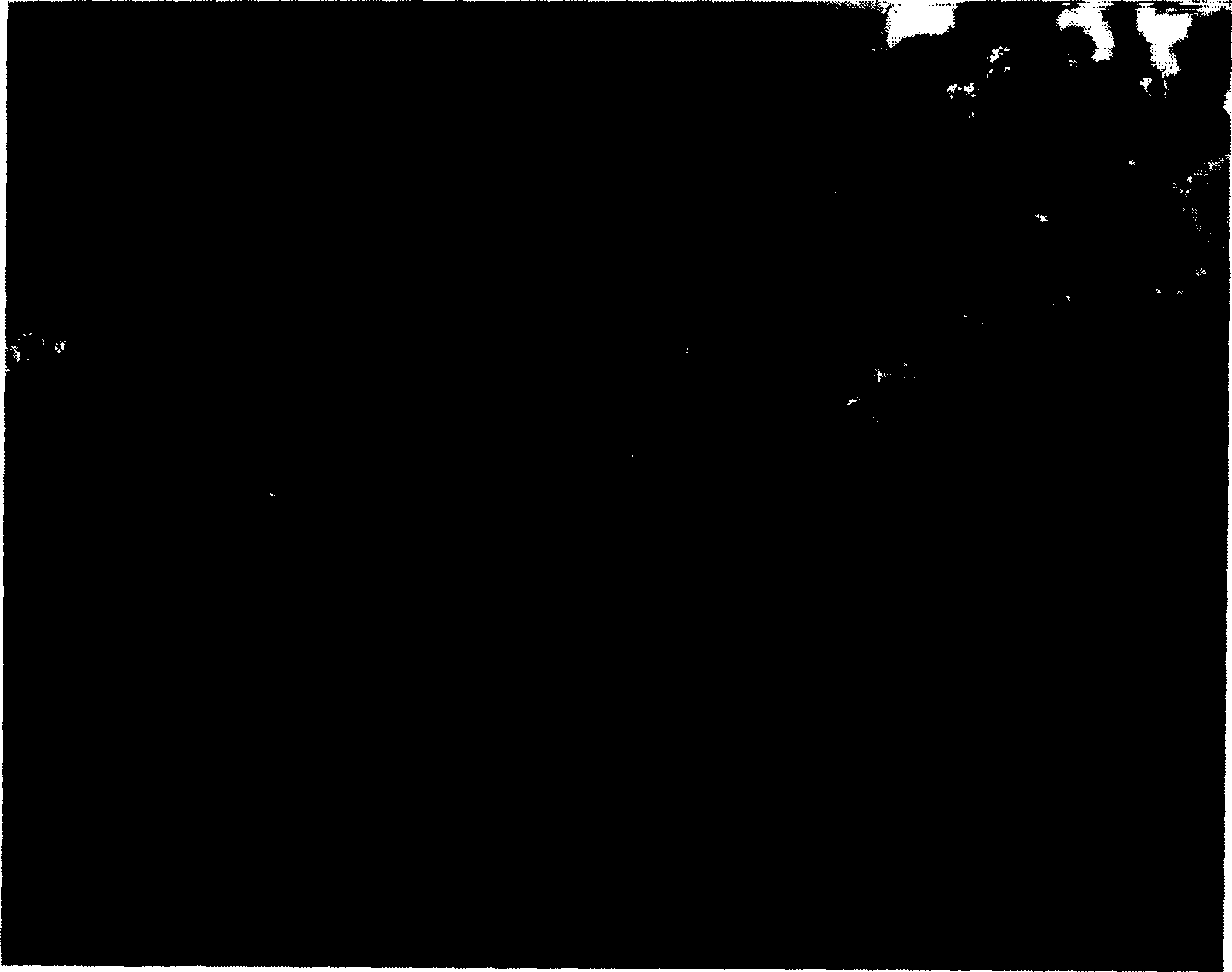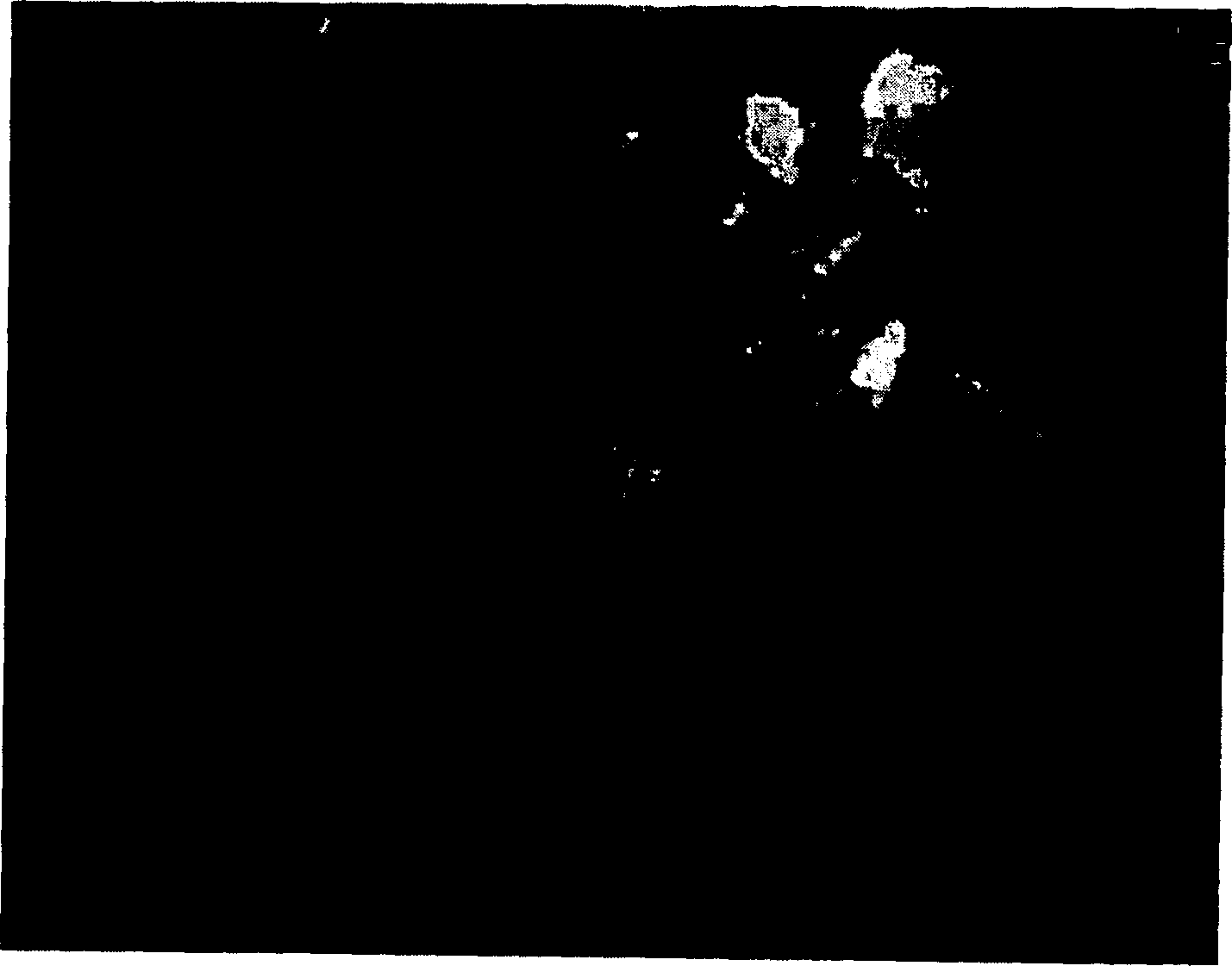Process for preparing nano-particle modified epoxy resin
A technology of nanoparticle and epoxy resin, which is applied in the field of preparation technology of nanoparticle modified epoxy resin, which can solve the problems of few special and functional products, backward technology and poor quality, and achieve low cost and simple process flow , the effect of convenient operation
- Summary
- Abstract
- Description
- Claims
- Application Information
AI Technical Summary
Problems solved by technology
Method used
Image
Examples
Embodiment 1
[0017] 1), 48.20 grams of bisphenol A, 9 grams of nano-CaCO 3 Particles and 102 milliliters of NaOH solution with a mass concentration of 10% were added into a 250 milliliter round bottom flask, the temperature was raised and the stirring and ultrasonic generator were started, the stirring rate was controlled at 500 rpm, and the ultrasonic power was 140 watts, and dispersed at 70°C Dissolve for 30 minutes, then cool down to 47°C;
[0018] 2) Add 20 ml of epichlorohydrin at one time. After the addition, the system is heated up to 80°C for 1.5 hours, and then heated to 90°C for 45 minutes. After the reaction, inject cold water at room temperature, and stop after the resin sinks. Stir, remove the water phase, start stirring and inject 85°C hot water and heat to boiling, add cold water at room temperature after stirring for 30 minutes, stop stirring to remove the water phase, repeat this until the pH value is equal to 7, stop, and then dehydrate under normal pressure to 115°C, de...
Embodiment 2
[0021] 1), 723 grams of bisphenol A, 150 grams of nano-CaCO 3 Particles and 1500 ml of NaOH solution with a mass concentration of 10% are added to a 5000 ml reaction kettle, the temperature is raised and the stirring and ultrasonic generator are started, the stirring rate is controlled at 600 rpm, the ultrasonic power is 140 watts, and dispersed and dissolved at 70 ° C 30 minutes, then cool down to 47°C;
[0022] 2) Add 300 ml of epichlorohydrin at one time. After the addition, the system is heated to 80°C for 1.5 hours and then heated to 90°C for 45 minutes. After the reaction is completed, pour cold water at room temperature and stop after the resin sinks. Stir to remove the water phase, start stirring and inject 90°C hot water and heat to boiling, add cold water at room temperature after stirring for 30 minutes, stop stirring to remove the water phase, repeat this until the pH value is equal to 7, stop, and then dehydrate under normal pressure to 115°C, dehydration under r...
Embodiment 3
[0024] 1), 48.20 grams of bisphenol A, 8 grams of nano-TiO 2 Particles and 102 milliliters of NaOH solution with a mass concentration of 10% are added into a 250 milliliter round bottom flask, the temperature is raised and the stirring and ultrasonic generator are started, the stirring rate is controlled at 800 rpm, the ultrasonic power is 140 watts, and the dispersion is carried out at 70 ° C. Dissolve for 30 minutes, then cool down to 47°C;
[0025] 2) Add 20 ml of epichlorohydrin at one time. After the addition, the system is heated up to 80°C for 1.5 hours, and then heated to 90°C for 45 minutes. After the reaction, inject cold water at room temperature, and stop after the resin sinks. Stir to remove the water phase, start stirring and inject 90°C hot water and heat to boiling, add cold water at room temperature after stirring for 30 minutes, stop stirring to remove the water phase, repeat this until the pH value is equal to 7, stop, and then dehydrate under normal pressur...
PUM
 Login to View More
Login to View More Abstract
Description
Claims
Application Information
 Login to View More
Login to View More - R&D
- Intellectual Property
- Life Sciences
- Materials
- Tech Scout
- Unparalleled Data Quality
- Higher Quality Content
- 60% Fewer Hallucinations
Browse by: Latest US Patents, China's latest patents, Technical Efficacy Thesaurus, Application Domain, Technology Topic, Popular Technical Reports.
© 2025 PatSnap. All rights reserved.Legal|Privacy policy|Modern Slavery Act Transparency Statement|Sitemap|About US| Contact US: help@patsnap.com


